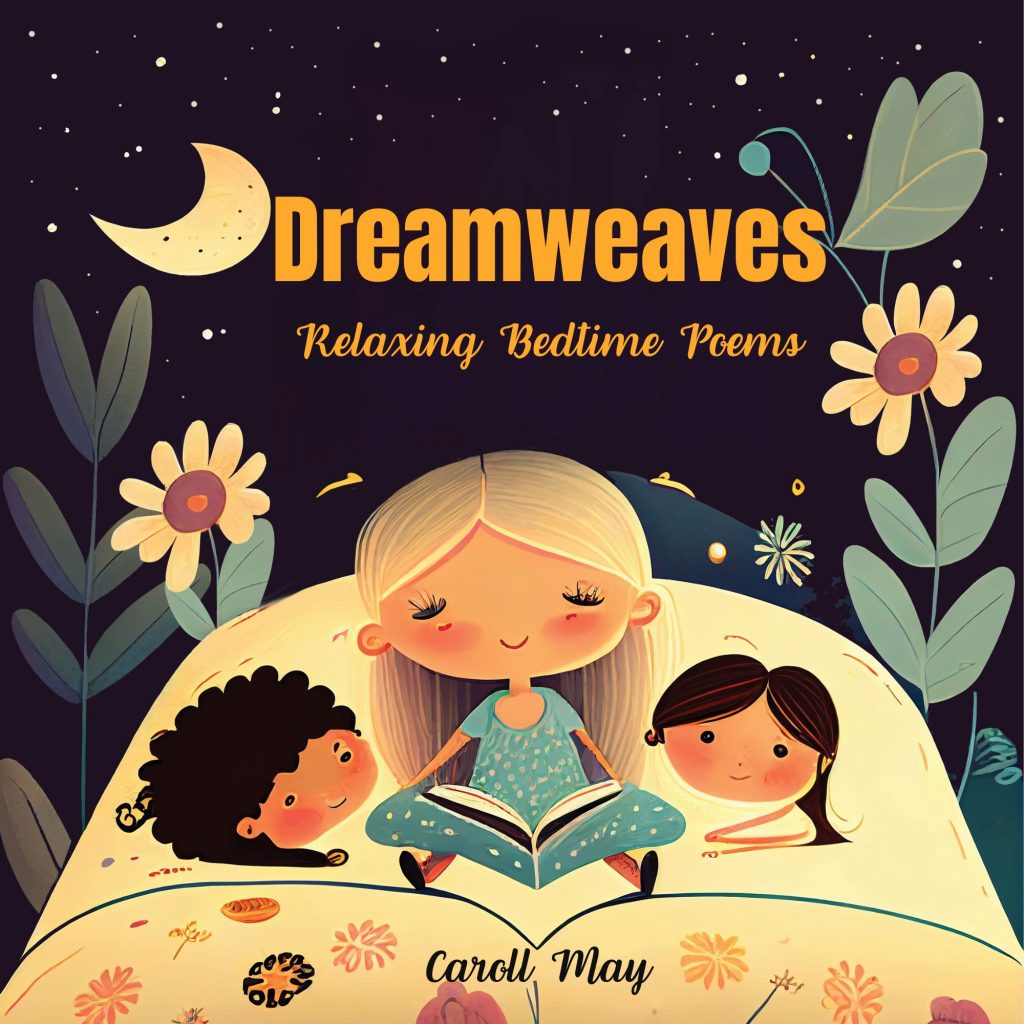Dive into rhyme poems for kids, a wonderful world that entertains and teaches kids. Rhymes have a magic that captures children’s interest. It helps them start their journey in language. Let’s explore how engaging fun for little ones with rhymes can boost their brain power. It also ignites a love for reading that lasts.
Key Takeaways
- Rhyme poems serve as an enjoyable entry point into the world of language for children.
- Simple rhyming tales can significantly influence early cognitive development.
- Engaging poems promote memorization and language skills in a fun manner.
- The repetitive structure of rhymes aids in the growth of pronunciation and reading abilities.
- Interactive rhyme poems for kids can foster a love for creative expression and literacy.
The Timeless Appeal of Nursery Rhymes
For generations, nursery rhymes have been a big part of kids’ learning. Their simple tunes and rhythms do more than entertain. They help build language skills and thinking abilities.
Historical Significance of Children’s Poetry
Many nursery rhymes are very old, some hundreds of years. They carry historical stories. By singing them, we keep the past alive. Within their fun words, there are stories and lessons from history.
Benefits of Exposure to Rhyme and Rhythm in Early Development
Nursery rhymes have lots of educational benefits. They help with remembering things, speaking clearly, and even reading. Rhymes make learning about sounds fun, which is key for reading later on.
The repetition in rhymes makes it easier for kids to learn language. It makes learning fun and interactive.
- Memory Aid: Nursery rhymes are effective mnemonic devices, helping kids remember words, numbers, and sequences.
- Speech Development: Reciting rhymes improves articulation, pronunciation, and tempo control in young learners.
- Phonemic Awareness: Through rhyme and repetition, children gain an understanding of how language sounds and its rhythmical intricacies.
In short, nursery rhymes are more than fun. They’re tools that shape young minds. They blend entertainment, culture, and learning, always captivating.
Fostering Creativity with Playful Poems for Children
Poetry awakens the imagination of children, leading to a lifetime of creativity. Playful poems are more than words that rhyme. They are a canvas for young minds to paint with endless creativity. Introducing kids to poetry opens up worlds beyond reality, spurs new ideas, and builds love for words.
Rhyme and meter give poetry its heartbeat, making it fun and educational. These elements grab and keep children’s attention. Through rhymes, kids enjoy words’ patterns and sounds, starting their creative journey. Rhymes’ repetition and predictability give kids a safe space to explore creativity.
Children’s poetry themes spark imagination in different ways:
- Animal poems teach about nature with stories of personified creatures.
- Fantasy rhymes take kids to magical places with dragons and fairies.
- Adventure tales inspire bravery and lead to playful storytelling.
Poems not only inspire creativity but also help kids express feelings and see various viewpoints. Diving into poetry helps children grasp human expression and the importance of empathy.
| Poetic Theme | Creative Exploration |
|---|---|
| Nature Poems | Connecting with the environment and understanding the cycles of life through lyrical depiction. |
| Fancy Adventures | Building imaginative scenarios that foster problem-solving and inventive play. |
| Humorous Verses | Discovering the joy of laughter and the playful use of language to amuse and entertain. |
The mix of words and thoughts in playful poems for children is a child’s first fun learning experience. Here, fun meets learning, and poetry’s rhythm sets the stage for childhood adventures. Let’s continue sharing verses, bringing joy and creativity to our young ones.
Rhyme Poems for Kids: A Gateway to Language Mastery
Dive into the fun world of rhyme poems with young learners. They’ll explore language in a new, exciting way. Rhyme poems are a key to understanding language, making learning a joy. They blend fun with learning, helping kids grasp new words naturally.
Learning New Words through Rhymes
Kids love the sounds in rhyming couplets and stanzas. They learn new words without even trying. Rhymes help them recognize patterns, making learning easier. This boosts reading skills and brain development.
Enhancing Pronunciation and Listening Skills
Rhymes make pronunciation better and improve listening. Kids practice how to say words clearly by reciting poems. They learn to tell similar and different sounds apart. This builds a strong foundation for speaking and listening well.
| Aspect of Language Development | Benefits of Rhyme Poems |
|---|---|
| Vocabulary Expansion | Introduces new words in an engaging context |
| Phonemic Awareness | Strengthens the ability to identify and work with individual sounds in spoken words |
| Listening Skills | Encourages active listening and sound discrimination through repetition and rhythm |
| Pronunciation | Improves speech clarity and articulation as children imitate the sounds they hear |
| Reading Comprehension | Promotes understanding of sentence structure and storytelling |
Adding rhyme poems for kids to daily learning sparks love for words. Through playful learning, kids effortlessly move towards mastering language.
Dive Into Fun Rhymes: A Collection of Favorites
Nothing grabs the attention of kids like a catchy rhyme. Rhymes take them on an adventure through sounds and words. They offer both fun and learning in a musical way.
Humpty Dumpty, Jack and Jill, Twinkle, Twinkle, Little Star are just a start. These rhymes make learning sounds easy. They help kids speak clearly and read smoothly.
- Humpty Dumpty teaches children about rhythm and the unexpected turns of storytelling.
- Jack and Jill integrates simple counting and sequencing, making it a perfect blend of learning and fun.
- The twinkling charm of Twinkle, Twinkle, Little Star introduces young minds to the wonders of the cosmos while soothing them with its lullaby-like quality.
Each rhyme is special. They bring happiness and help in learning. These poems are treasures from our childhood that inspire learning and imagination.
Getting kids into rhymes is great for learning language. It fills their early years with magic and happiness. Let’s explore this rich world of rhymes together.
Nursery Rhymes: The Building Blocks of Early Education
Nursery rhymes play a big part in early childhood development. They help start early literacy for young learners. These simple verses offer many benefits and set the foundation for lifelong learning.
Key elements of nursery rhymes include their rhythm. This engages kids and helps them learn the sounds of language. This is fun for kids and teaches them about syllables, which is important for reading.
- Language Development
- Phonetic Skills
- Vocabulary Expansion
- Memory and Recall
- Sequencing Skills
- Social and Emotional Growth
Nursery rhymes are often a child’s first encounter with stories. They have a beginning, middle, and end. This teaches kids about storytelling and the concept of narrative structure.
The repetition in nursery rhymes helps children remember words and phrases. This improves their memory, which is crucial for learning language.
Using nursery rhymes daily isn’t just for fun. It helps boost educational growth. Every rhyme recited improves cognitive skills and language abilities, preparing children for future learning.
By understanding the huge potential of nursery rhymes in child development, we can use them wisely. They aren’t just simple verses. Nursery rhymes are vital for learning, giving kids a strong start.
Interactive Rhyming Activities for Energetic Learners
Interactive rhyming activities boost children’s language skills and get them moving. They combine fun, learning, and creativity. This mix helps kids remember better while having a blast.
Rhyme and Movement: Enhancing Motor Skills
Rhyming activities paired with physical activity enhance kids’ motor skills. They learn through action, like dancing or using hand gestures with rhymes. This approach makes learning stick in an exciting way.
Hands-On Rhyming Games and Craft Ideas
DIY projects and games strengthen rhyming lessons. Through crafting and playing, kids boost their brain power, motor skills, and love for words.
Remember:
Learning is best when kids dive in and play. Interactive rhyming activities mix learning with fun. They make education feel like a game.
| Activity Type | Skills Developed | Example Rhyming Activity |
|---|---|---|
| Movement-Based | Gross Motor Skills | ‘Simon Says’ with Rhyming Commands |
| Craft-Based | Fine Motor Skills | Rhyme-Matching Memory Card Game |
| Game-Based | Cognitive Development | Rhyming Bingo |
Through interactive rhyming, kids engage actively in their learning. This active involvement helps them remember more and love language and rhythm.
Bringing Stories to Life with Educational Poems
Educational poems turn simple tales into thrilling adventures. They’re a dynamic educational tool, capturing kids’ attention and boosting their learning. Through these poems, children go on vivid journeys that help them understand complex ideas.
These poems lay the groundwork for literacy. They use rhythm and rhyme to make learning facts and stories stick. They link imagination with education, making lessons unforgettable. When they hear these lyrical narratives, kids are more eager to learn and remember.
To show how educational poems enhance learning, here are some examples:
- Epic poems make history fun by telling stories that kids enjoy.
- Poems about science explain complex ideas in a simple, playful way.
- Moral stories in poems, with their catchy phrases, are easy to remember.
Poems are a powerful educational resource that also spark a love for reading. Below is a table on how educational poems impact learning:
| Developmental Area | Impact of Educational Poems |
|---|---|
| Language Acquisition | Boosts vocabulary and syntax knowledge through exposure to new words and sentence structures. |
| Cognitive Development | Enhances memory and pattern recognition with the rhythm and sequences in poems. |
| Social & Emotional Learning | Builds empathy and emotional intelligence by exploring various themes and characters. |
| Creativity & Imagination | Fuels imagination and creative thinking as kids interpret the poems’ imagery and messages. |
Educational poems transform learning. They don’t just teach kids about language and concepts. They open up a world where stories come alive. This makes learning an exciting quest. As kids grow, these tales form the base of their understanding of the world and its wonders.
Creative Rhymes to Spark Imagination in Young Minds
Helping kids love language and spark their imagination can be fun with rhyme poems. Using rhymes filled with bright pictures and strong metaphors grabs kids’ attention. It also helps them love poetry and be creative for life. Rhyme poems help kids think in new ways and understand complex ideas.
Using Imagery and Metaphor in Rhyme Poems for Kids
Imagery in rhymes creates clear pictures for kids, making them think of new ideas and feelings. By using descriptive words, we can turn simple rhymes into doors to creativity. This makes learning fun and exciting for kids.
- Visual Stimuli: Add vivid descriptions that bring pictures to mind and create vivid images.
- Symbols: Use common items as symbols to explain big ideas easily.
- Emotion: Share feelings through metaphors, making poems connect with kids personally.
Rhyme poems mix words with feelings and sensory details well. They help kids enter the world of figurative language and artistic thinking.
Rhyme poems should be more than teaching tools; they should be playgrounds for imagination. They start simple but can lead kids on endless journeys. These journeys can create the most amazing mental images for them.
The Joy of Reciting Kids Poetry Together
Poetry can be a fun journey for children and a way for families to bond. It’s not just about reading or listening. It’s about making memories and learning together. Sharing poetry can strengthen family ties, help with language skills, and teach rhythm and phrasing.
Family Bonding over Shared Poem Reading
Reading poems together is a great way to connect with your kids. Reciting poetry lets family members share emotions and enjoy being together. It helps parents build a child’s love for language during special moments.
“Poetry is the gateway to the soul, and reading together is the key that opens the door to a lifelong love for words.”
Organizing Poetry Recital Events for Kids
Setting up poetry recital events is a fun way to celebrate language. Schools and libraries play a key role in hosting these events. They’re not only entertaining but also let kids express themselves and build speaking confidence.
- Theme Selection: Choose themes that resonate with kids, such as adventure, nature, or friendship.
- Invitations: Rally parents, teachers, and the community to support and participate in the event.
- Rehearsal Sessions: Schedule practice times to help the children prepare.
- Poetry Anthology: Create a collection of poems that will be recited, catering to different age groups and interests.
| Event Aspect | Importance | Tips for Success |
|---|---|---|
| Venue Setup | Critical for creating an inviting environment. | Use colorful decorations and comfortable seating. |
| Audio Equipment | Essential for clarity of the spoken word. | Ensure microphones and speakers are of good quality. |
| Parental Involvement | Boosts children’s confidence. | Encourage parents to attend and participate. |
| Feedback Mechanism | Helps children improve and teaches them how to receive constructive criticism. | Set up a panel of friendly judges or use audience applauses as feedback. |
By highlighting the joy of language with poetry, we foster a love for expression and creativity. Such efforts can deeply affect kids, giving them a lifelong passion for words.
Conclusion
Rhyme poems and nursery rhymes do more than entertain kids. They have historical value and boost creativity. They’re crucial for education, too.
These verses help grow language skills and foster family bonds. Poetry for kids shines in child development, proving its value every day.
Engaging with rhyme poems has a big impact. They spark the imagination and make listening and speaking better. They’re key for mastering language.
Recitals and activities improve motor skills and bring people together. These create lasting memories in schools. We see the power of sharing stories and creativity through poetry.
Rhyme poems for kids are not just fun tunes. They help grow a child’s verbal and emotional intelligence.
It’s a joy for us to help this growth as educators, parents, and guardians. Early exposure to rhyme and rhythm teaches and instills a love for language and learning.
This lays the foundation for a fulfilling, lifelong journey in education. It makes growing up a poetic adventure for every child.
FAQ
Are rhyme poems suitable for kids of all ages?
Yes, rhyme poems are great for every kid. Young ones enjoy the sounds and playful words of nursery rhymes. Older kids like the complicated rhyme patterns and ideas.
How can exposure to rhyme and rhythm benefit children’s development?
Rhyme and rhythm help kids grow in many ways. They boost language skills, awareness of sounds, and memory. They also encourage a love for music, creativity, and imagination.
How can rhyme poems help in language mastery?
Rhyme poems make learning new words and vocabulary fun. Kids can remember and understand new words easily. This is because of the repeating patterns and fun rhymes.
How do rhyme poems enhance pronunciation and listening skills?
Rhymes improve speaking clearly and listening well. Kids learn to say words correctly and understand sounds better. This happens when they say and hear rhymes.
Can you suggest some interactive rhyming activities for energetic learners?
Sure! Combine rhymes with movements, like dancing or jumping, to boost motor skills. Try hands-on games or crafts, such as rhyme matching cards or making word collages. These activities make learning active and fun.
How can educational poems bring stories to life?
Educational poems use vivid pictures and descriptive words to make stories exciting. They take kids to imaginary places. This makes learning unforgettable and fun.
How can using imagery and metaphor in rhyme poems spark imagination in young minds?
Imagery and metaphors in rhymes excite kids’ creativity. They help kids see and think about things in new ways. This grows their creativity and helps them understand the world better.
How can family bonding be enhanced through shared poem reading?
Reading poems together strengthens family ties. It leads to talking, sharing ideas, and enjoying books together. This builds a love for reading and words in the family.
How can poetry recital events be organized for kids?
Organize kids’ poetry events at schools or community places. Include kid performances, writing workshops, and contests. It’s a great way to celebrate and support kids’ creative and speaking skills.













